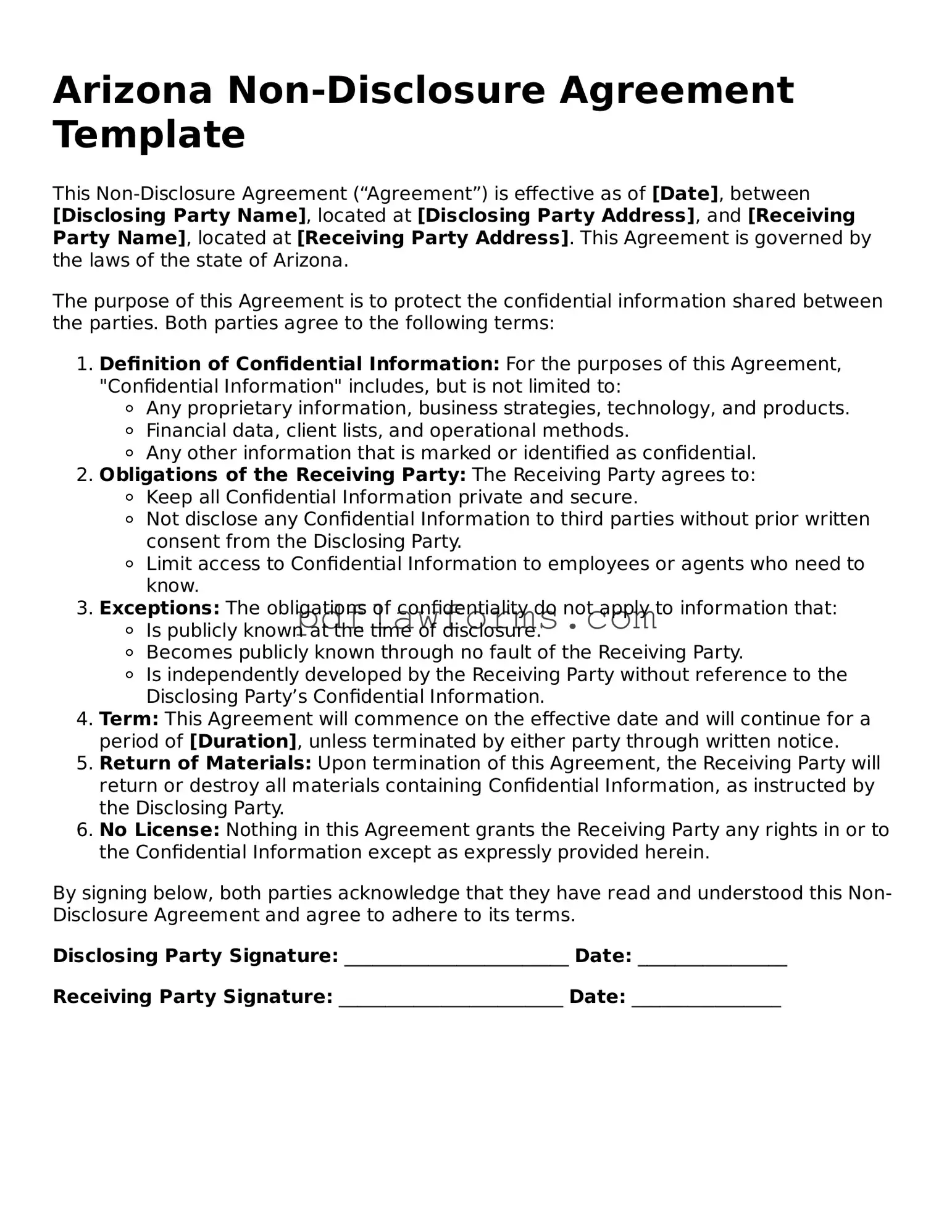Non-disclosure Agreement Form for the State of Arizona
A Non-disclosure Agreement (NDA) in Arizona is a legal document designed to protect confidential information shared between parties. This agreement ensures that sensitive information remains private and is not disclosed to unauthorized individuals. For those looking to safeguard their business secrets or personal data, filling out the NDA form is an essential step; click the button below to get started.
Make My Document Online
